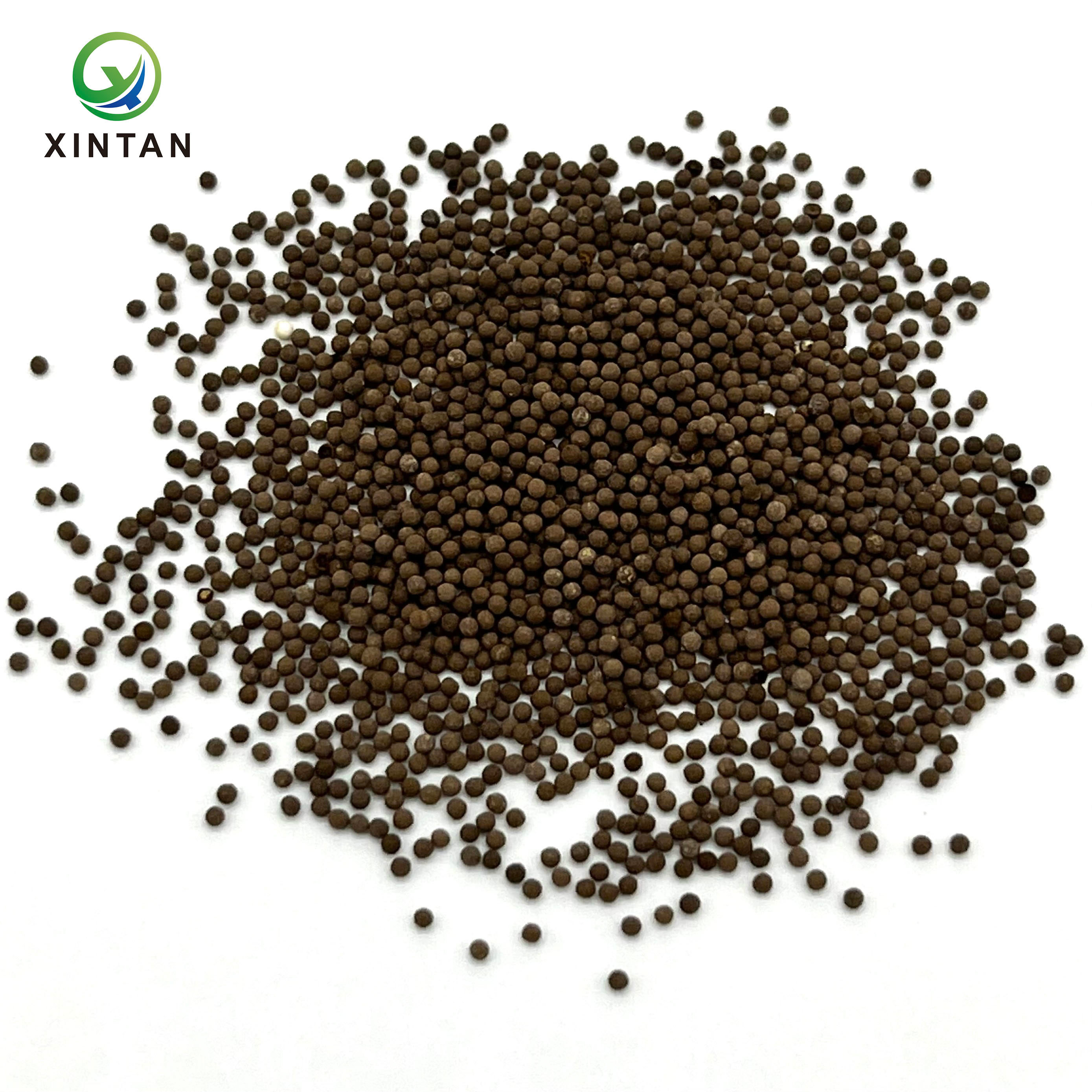Palladium on aluminium(Pd/Al2O3)
Model: XT-CAT-06
Uses: Removing H2 and O2,deoxidation.oxidation
Shape: Ф1mm, brown pellet
Composition: Pd,Al2O3
Characteristic: stable performance; Good selection performance; Wide application range
Index: See product details for specific parameters
Package: vacuum plastic bag
Application area: catalyze many important chemical reactions: such as hydrogenation, dehydrogenation, oxidation, etc., widely used in pharmaceutical, chemical, energy and other fields.
Product Details
1)Product introduction
Palladium on aluminium(Pd/Al2O3) is made of alumina as the carrier and precious metal palladium as the raw material. The product specification is brown spherical particles with a diameter of 1mm, which has the characteristics of good selectivity and stable performance. Palladium on aluminium(Pd/Al2O3) is an important inorganic compound with the molecular formula Pd(OH)2. It can catalyze many important chemical reactions, such as hydrogenation, hydrogenation, dehydrogenation, oxidation, etc., and is widely used in pharmaceuticals, chemical industry, energy and other fields. In addition, palladium hydroxide can also catalyze the synthesis and oxidation of organic compounds and is one of the important catalysts in organic synthesis. Palladium on aluminium(Pd/Al2O3) is also an important raw material for the preparation of palladium and palladium alloys.
2)Parameters
|
Active material |
Pd(OH)2 |
|
Appearance |
Ф1mm, brown sphere |
|
Sampling size |
0.5g |
|
Pd content (Dry basis) |
5.48%wt |
|
Bulk density (Wet basis) |
~0.890 g/ml |
|
Moisture content |
6.10% |
|
SBET |
229 m2/g |
|
Pore Volume |
0.4311 cm3/g |
|
Pore size |
7.4132nm |
Remark: The particle size and composition of palladium hydroxide can be customized.
3)Product advantages
A)Stable performance. Palladium on aluminium(Pd/Al2O3) can maintain its catalytic properties stably in a variety of environments, and also has excellent comprehensive properties such as high temperature resistance, oxidation resistance and corrosion resistance.
B)Good selection performance. This catalyst can be used in combination with other catalysts to greatly increase the activity of the catalytic reaction and improve the selectivity of the reaction.
C)Wide range of application. Palladium on aluminium(Pd/Al2O3) contains the precious metal palladium, has better chemical activity, can be widely used in pharmaceutical, chemical, energy, electronics, automotive and other fields.
4)Applications
Palladium on aluminium(Pd/Al2O3) has a wide range of application prospects, not only in chemistry, materials, energy and other fields plays an important role, but also in modern industry and high-tech fields have irreplaceable.
A) Electroplating. Palladium plating has good corrosion resistance and gloss and can be used for high preparation amount of metal surface coating. Palladium electroplating has become one of the important surface treatment technologies in the fields of electronics, aviation, automobile and so on.

B)Prepareing high purity palladium compounds. High purity palladium compounds are the raw materials for the preparation of high-performance materials, such as palladium-based catalysts, palladium-based electrode materials, palladium-based hydrogen storage materials, etc.
5) Remark:
Keep dry and sealed when stored.
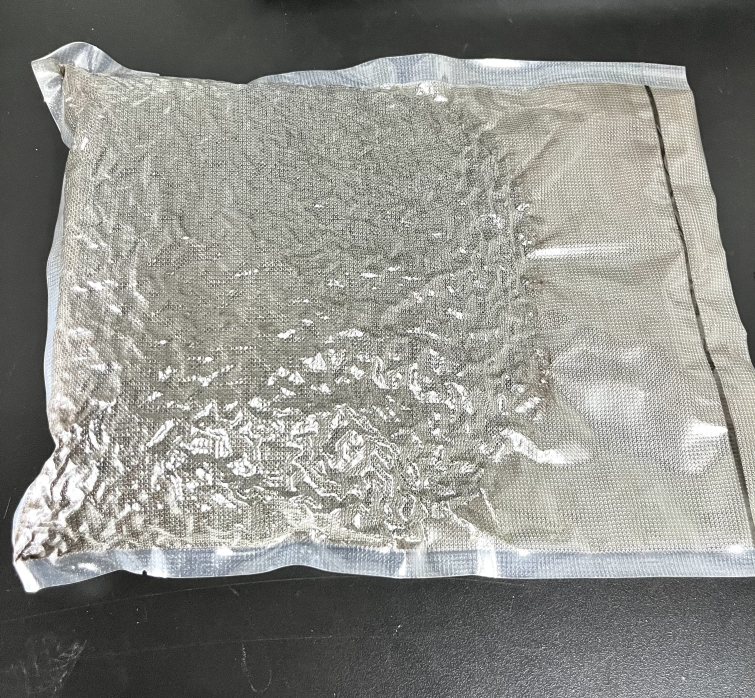
Qualification Certificate
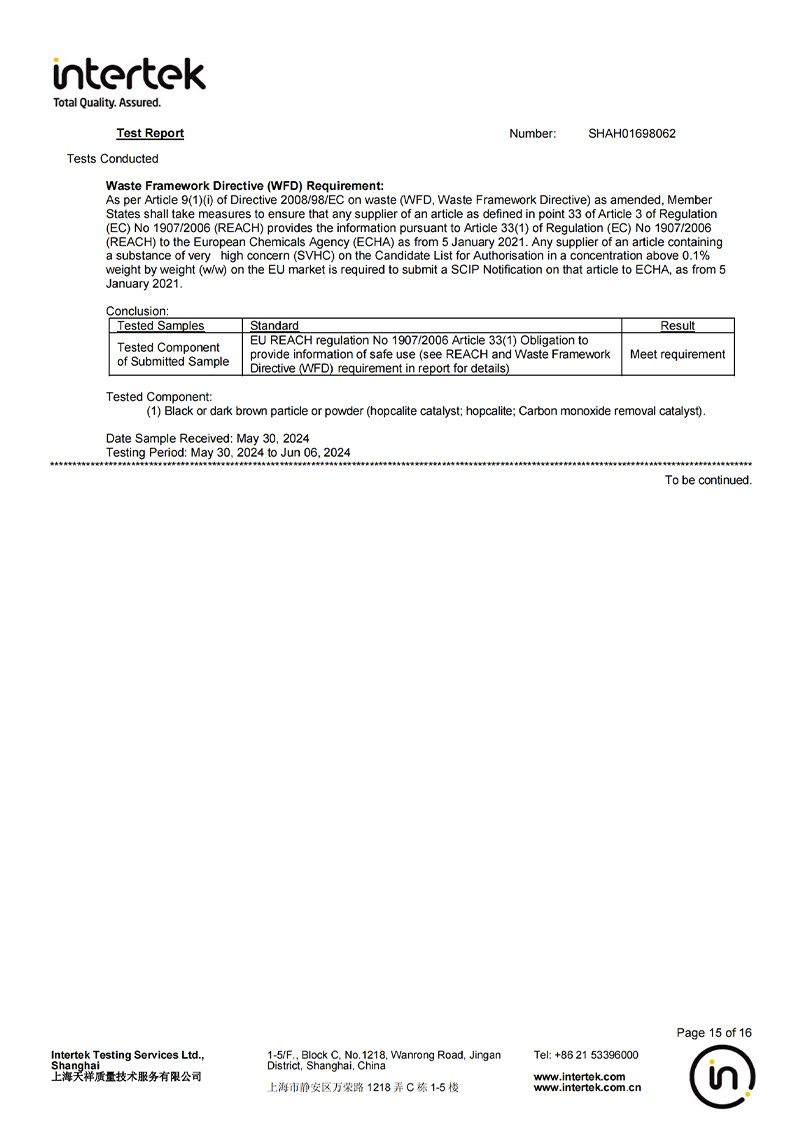
Test Report
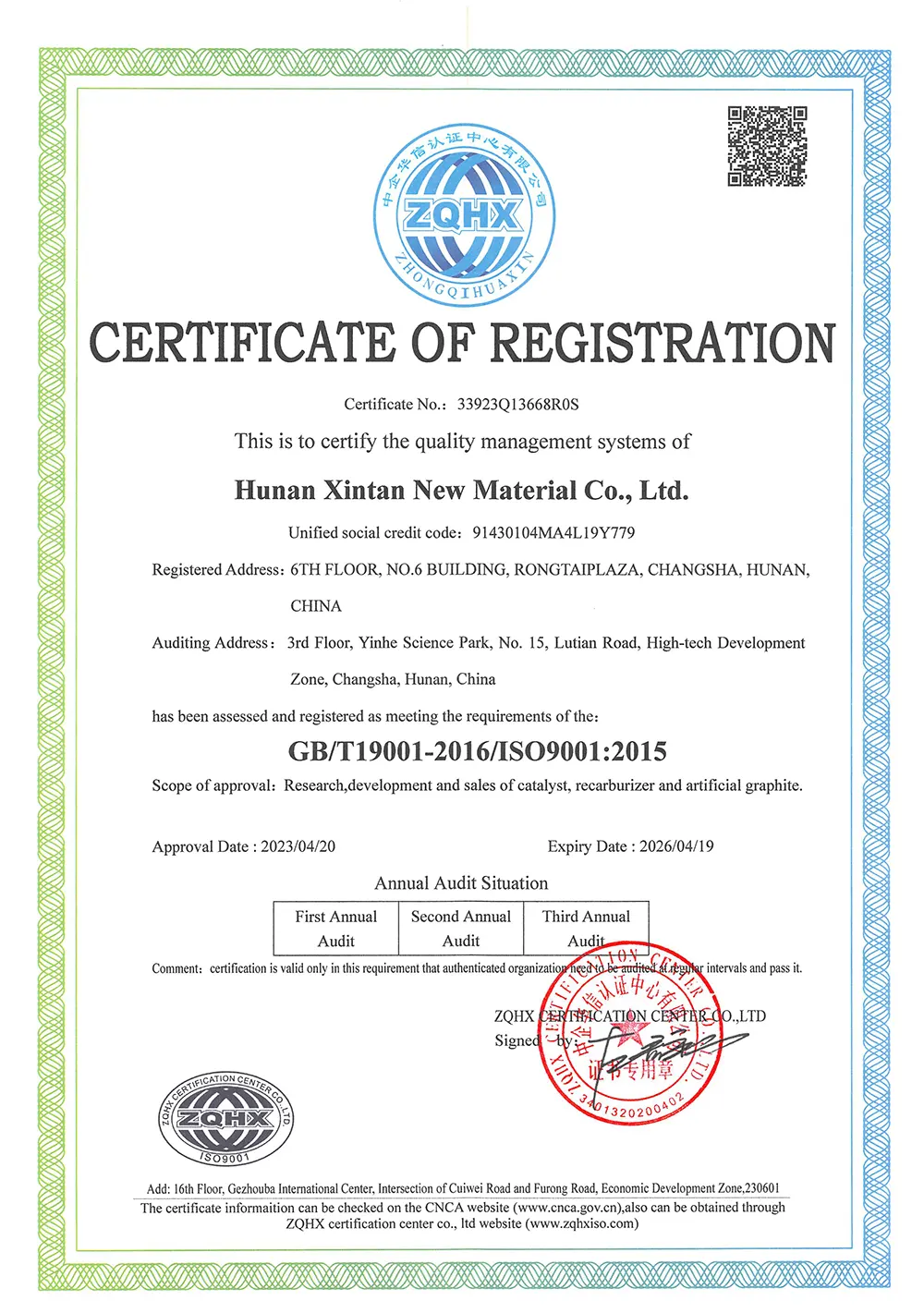
Quality Management System Certificate
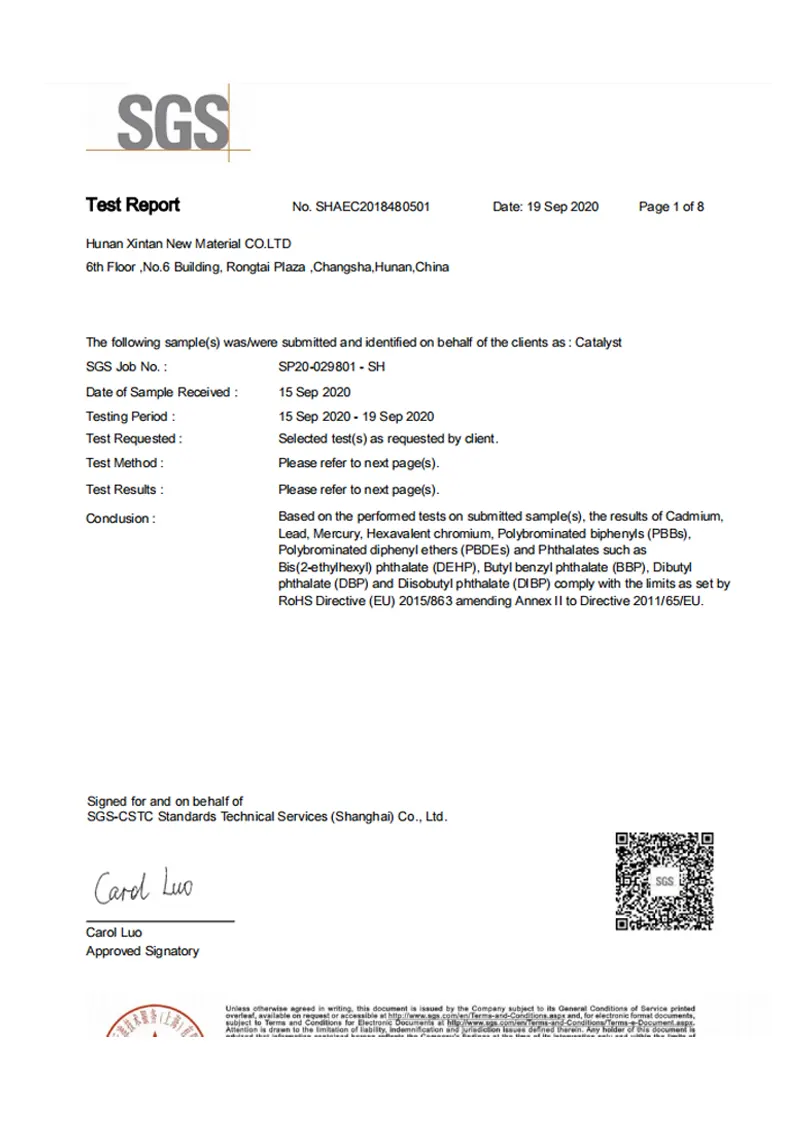
SGS
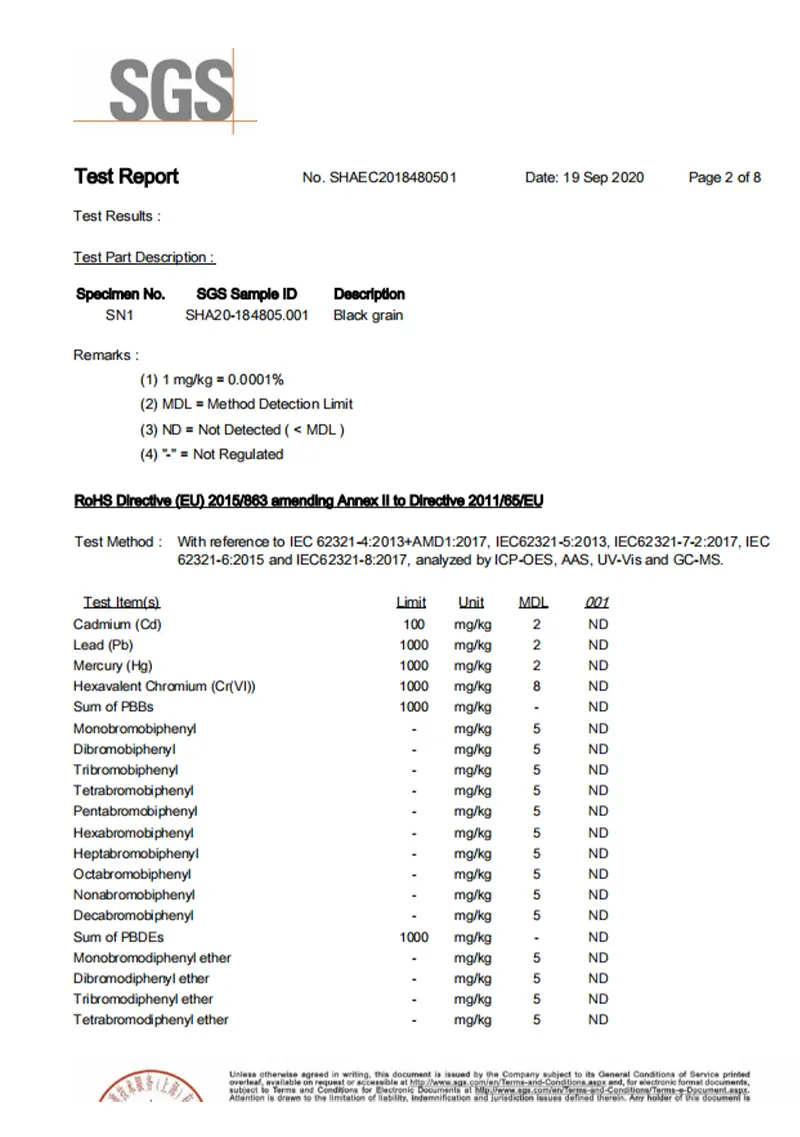
SGS
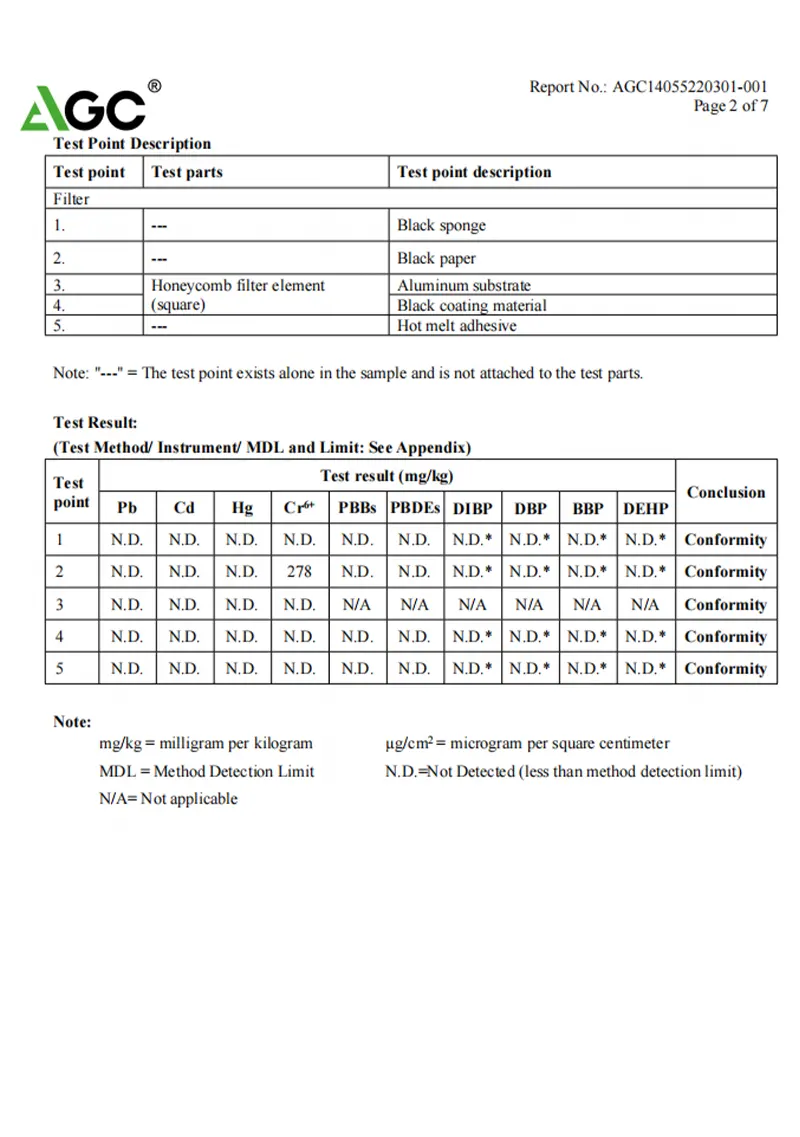
AGC
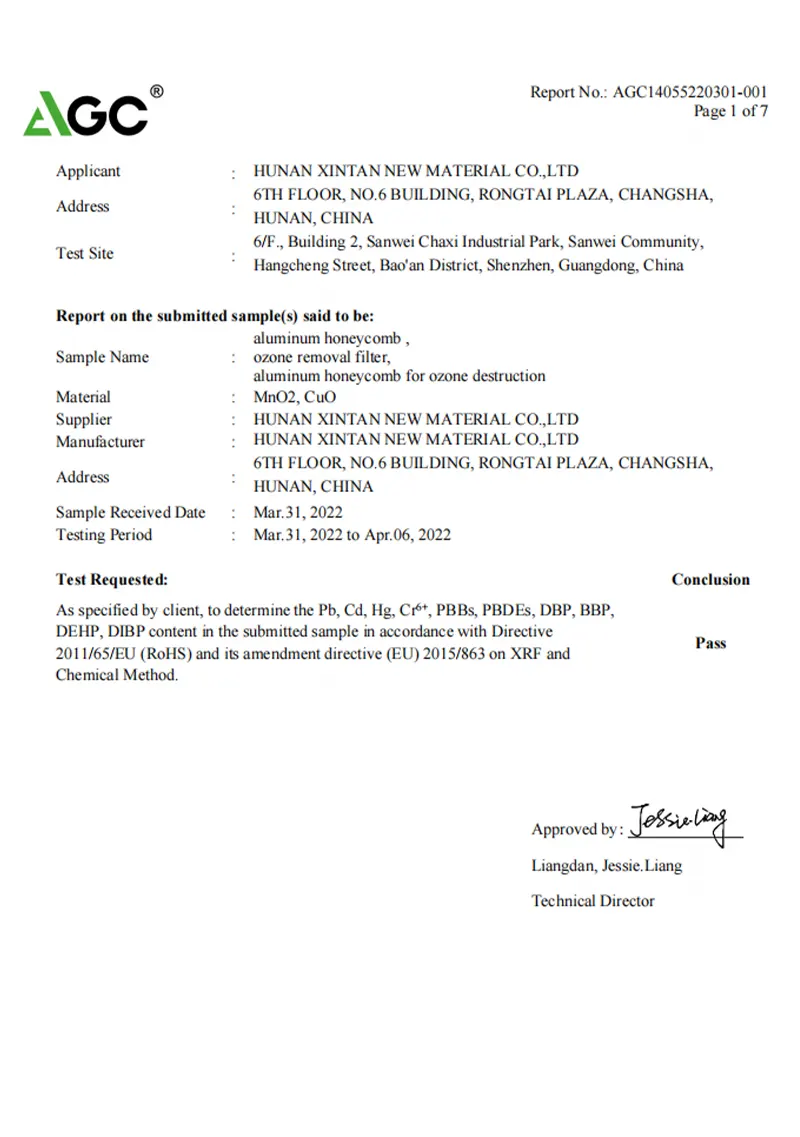
AGC
Related Products
Carbon molecular sieve, which are composed of elemental carbon, are a new type of adsorbent and an excellent non-polar carbon material. Hunan Xintan carbon molecular sieve is black columnar particles with a diameter of 1.0-1.3mm or customized. The product has the characteristics of strong nitrogen production capacity, high nitrogen recovery rate, long service life and low production cost. Carbon molecular sieve contain a large number of micropores, which have a strong instantaneous affinity for oxygen molecules and can be used to separate O2 and N2 in the air. In industry, carbon molecular sieves are often used in pressure swing adsorption (PSA) nitrogen production, which is suitable for various types of pressure swing adsorption nitrogen generators.
CO removal catalyst (Ceramic honeycomb)
CO removal catalyst (Honeycomb) uses cordierite honeycomb ceramic as a carrier and is a highly active catalyst prepared from a variety of rare earth metals. The CO removal catalyst (Honeycomb) produced by Hunan Xintan has the characteristics of high structural strength, strong surface coating adhesion, and is not easy to fall off. This catalyst can not only be used to treat carbon monoxide in flue gas, but also has high catalytic performance in chlorine-containing working conditions, and can be used for the treatment of chlorine-containing organic waste gas, and is widely used in the treatment ofsteel flue gas, lime kiln flue gas, waste incineration smoke and other smoke.
CO removal catalyst (Pt and Pd)
CO removal catalyst (pellet with Pt and Pd) is a precious metal palladium catalyst with alumina as a carrier. The carbon monoxide precious metal catalyst produced by Hunan Xintan is dark brown spherical particles with a diameter of 3-5mm, which is mainly used to remove H2 and CO at 20℃~300℃. The catalyst can convert CO to CO2 and H2 to H2O. It does not contain MnO2, CuO or S, so it can be safely used for CO purification in CO2. CO removal catalyst (pellet with Pt and Pd) have the characteristics of high catalytic efficiency, stable performance, safety, no energy consumption and long service life, and are widely used in the food industry.
CuO catalyst (for removing oxygen from Nitrogen or Methanol Synthesis)
CuO catalyst (for removing oxygen from Nitrogen or Methanol Synthesis) developed by Hunan Xintan is made of a high proportion of copper oxide (CuO) and inert metal oxides. It is a black cylindrical particle with a diameter of 5mm and a length of 5mm. The catalyst has the characteristics of high active component content, high packing density, low cost and long service life. It is a catalyst used to remove oxygen from nitrogen or inert gases such as helium and argon, which can efficiently convert oxygen to CuO without the need for additional energy. It does not contain any dangerous substances. The catalyst is widely used in gas treatment because of its high efficiency. The catalytic deoxidation reaction equation is as follows: CuO+H2=Cu+H2O 2Cu+O2=2CuO




